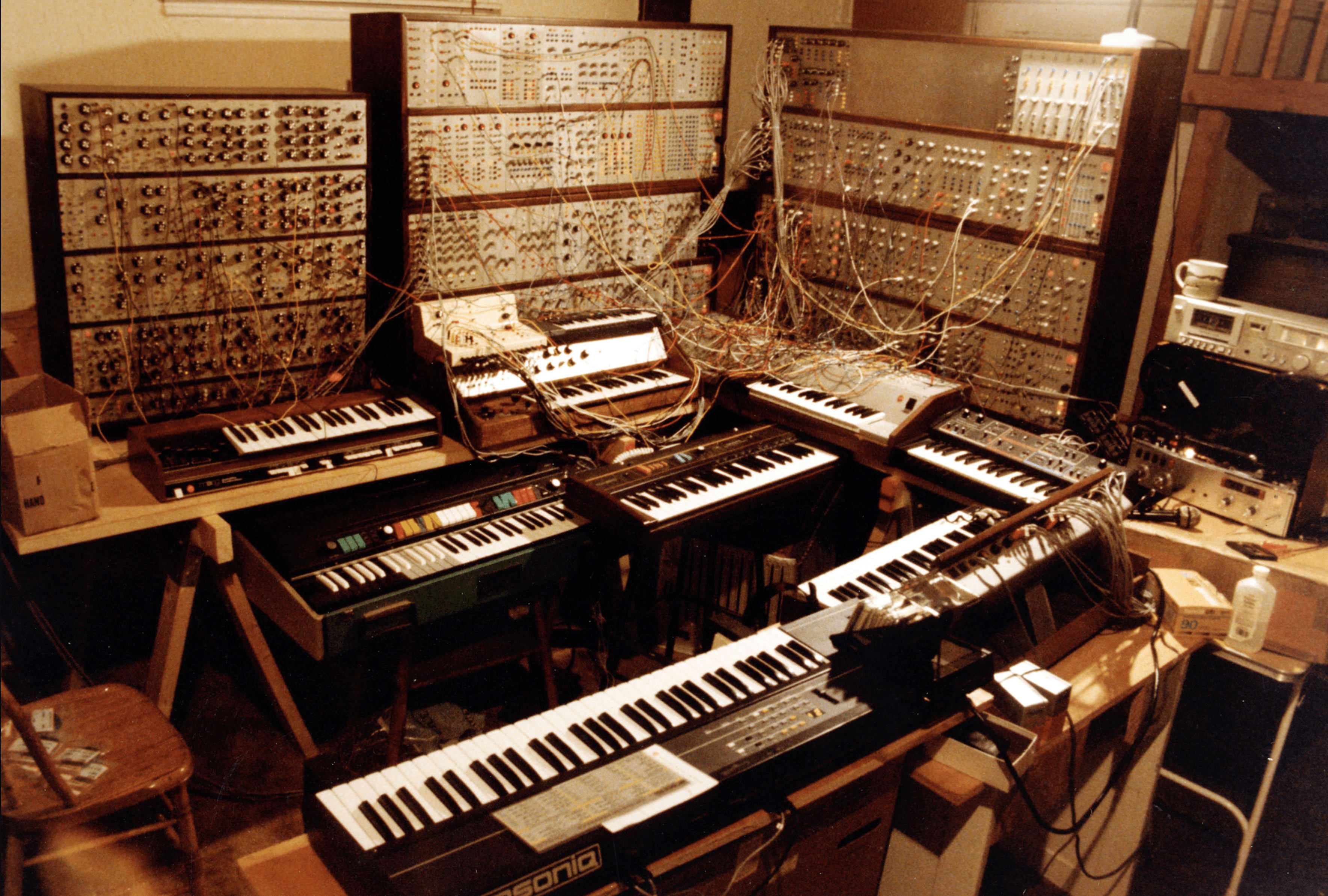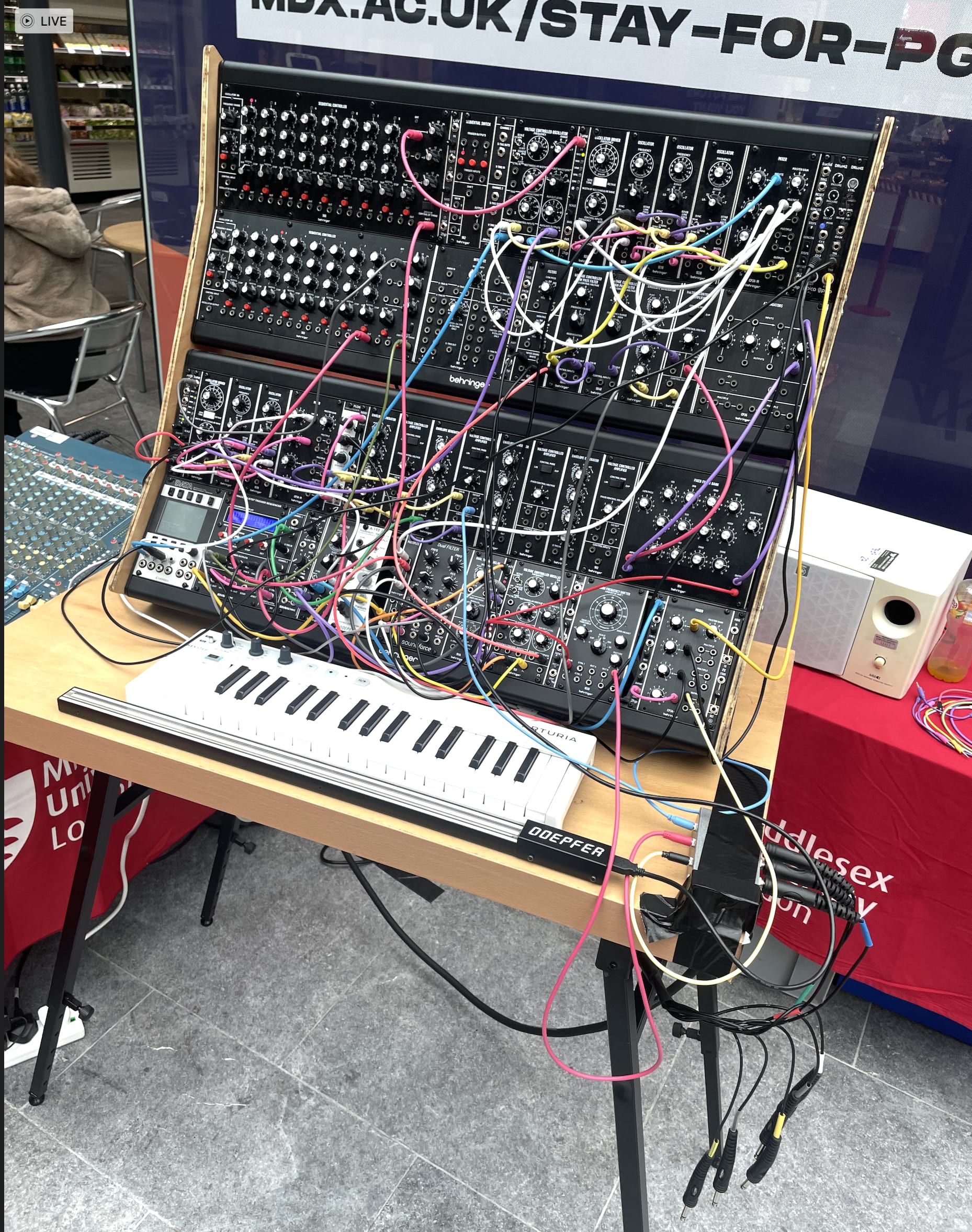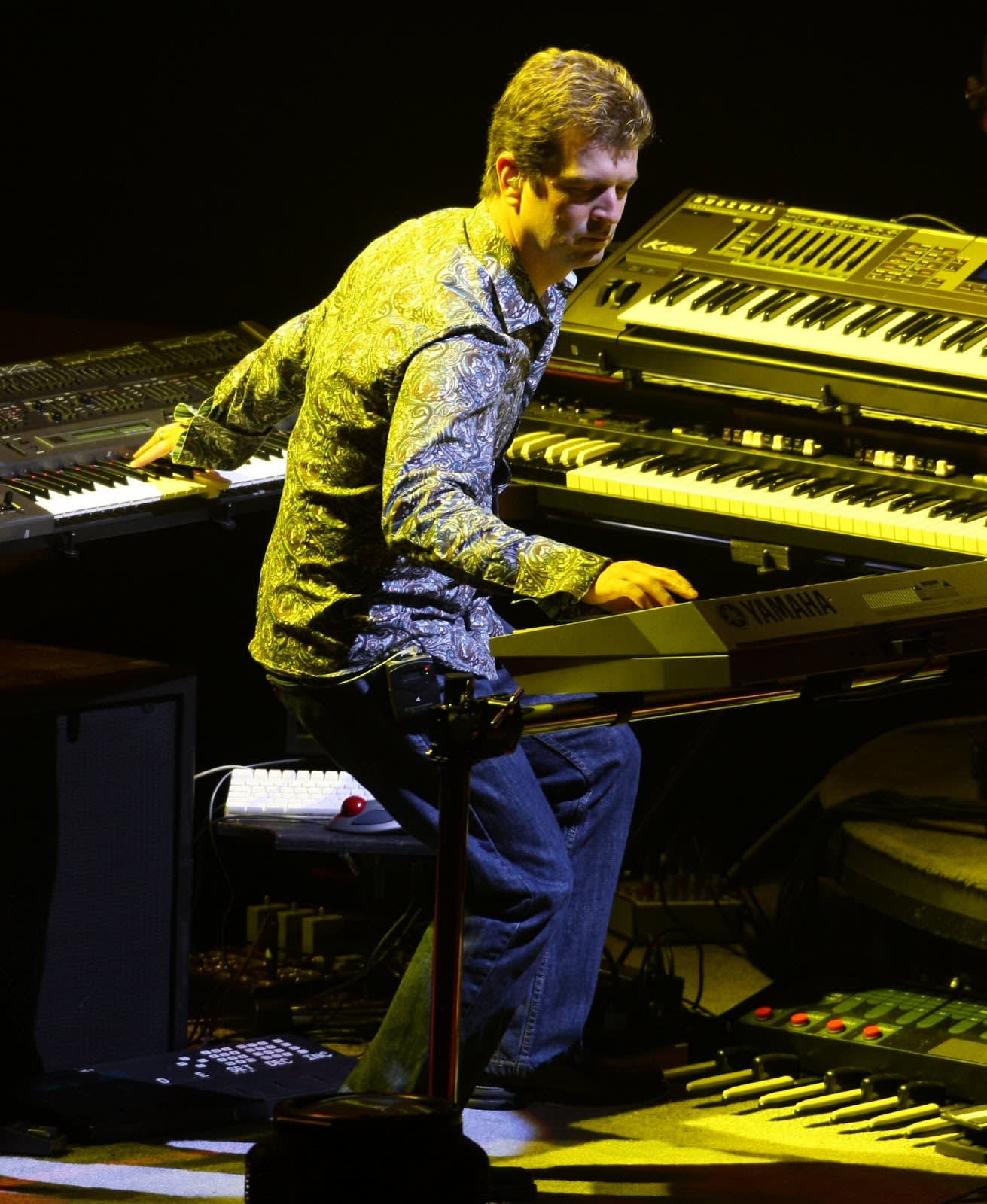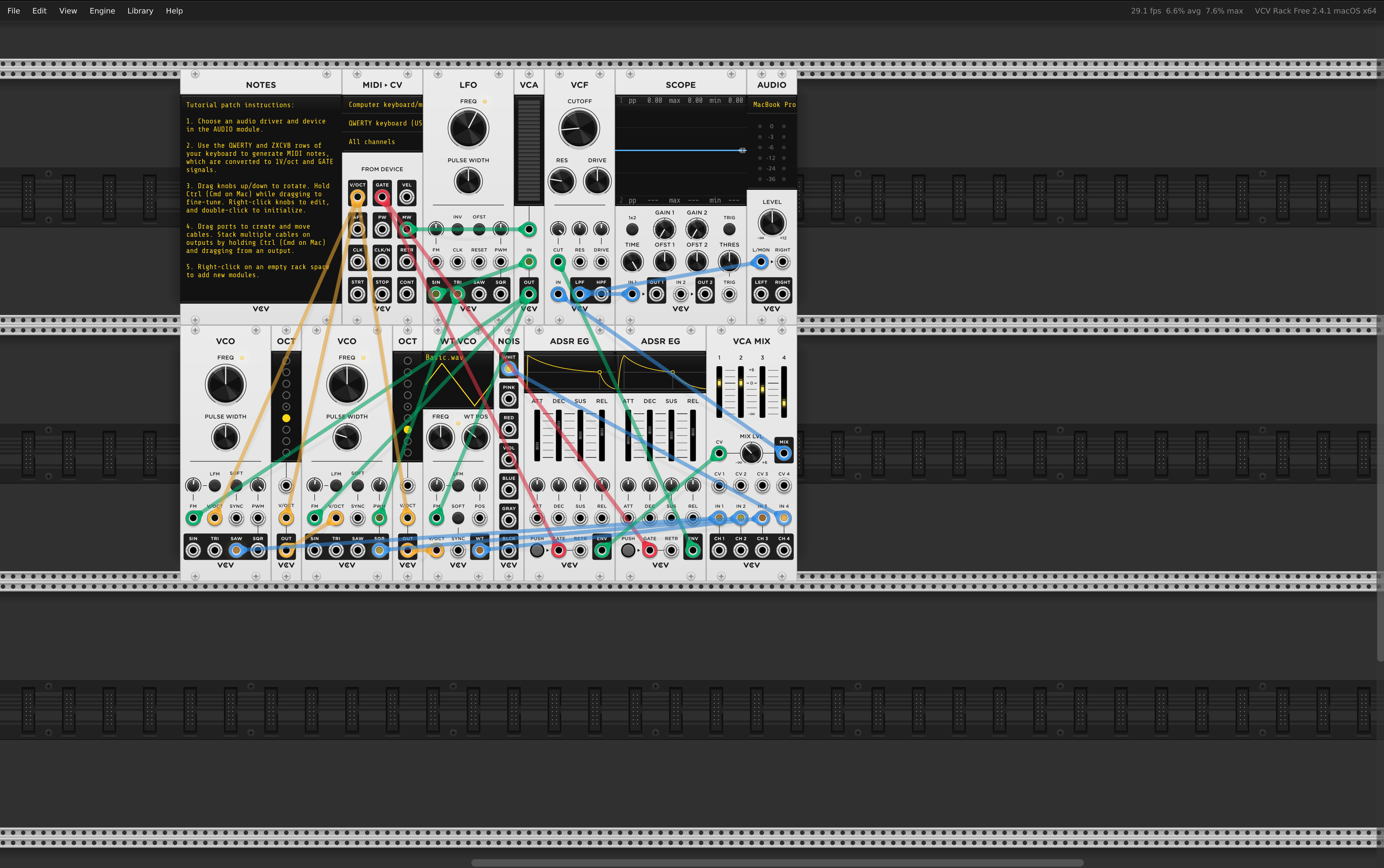Audio synthesis finds applications in music production, sound design, virtual reality, gaming, and various multimedia projects. It continues to evolve with technological advancements, offering new creative possibilities and enhancing the immersive audio experience.
Introduction
An audio synthesizer or "synth" produces sounds by combining various electronic signals. Audio synthesizers gained widespread adoption through the second half of the 20th century when there were originally only analog synthesizers. Since that time they have been used to produce new genres and music masterpieces. Along with the invention of computers, digital synthesizers have also been developed to take advantage of computing power.
Below is a vintage Old Joe modular analog synthesizer designed from 1974 through 1988 and reassembled in 2012 at the MIT Synth Museum .

A more modern setup of a synthesizer is Carl Reynold's which he brought to Middlesex University, London during a recent science exhibition;

As "Synthesis" means combining multiple elements to form an item, audio synthesizers often comprise various units such as the MiDI input, Operators, Recorders, Outputs, Carriers, BGAs, and many more. In its basic form, an oscillator generates an audio signal and passes through multiple filters before being sent out through the output.
As you might guess, physical synthesizers require a lot of capital resources to purchase and knowledge to assemble. With technological advancements, digital synthesizers were invented to use computer programs to perform audio synthesis.
Uses Of Audio Synthesizers
Synthesizers are more economical and efficient during live performances than a full-blown orchestra. A skilled Synthesizer operator can also perform most sounds made by orchestras having multiple people.
The following image shows David Rosenthal , using the Lexicon PCM Total Bundle setup live and in a Studio.

Introducing VCV Rack As A Digital Synthesizer
One example of a computer program for performing audio synthesis is VCV Rack . VCV acts as a digital playground offering various modules from its library for beginners and music professionals to put together when experimenting with audio synthesis.
Similar to a hardware synthesizer, a VCV rack uses modules representing the components of a synthesizer. The modules are connected by mapping output and input ports from each module in a rack.
Synthesis Lab Practice Using VCV Rack
For this demonstration, I will be using the VCV Rack software on my MacBook, starting with their basic starter setup.
When you launch the VCV software, the starter rack consists of a MiDi output, an oscillator, VCA Mix, Scope, and Audio modules.

The following clips show a sound I created while playing around with the basic setup;
Creating Music Using An Operator
The FM Operator module is not provided by default with VCV, hence, I needed to download it from the VCV library and sync it to my account.
For the next demonstration, I added a MiDi-CV, FM Operator, Bus Depot, and audio output modules to the deck. Below is the demo with one operator. I have set the MIDI input to use my MacBook's QWERTY keyboard and set the sound output to my MacBook's speakers;
Creating Music Using A Sequencer
While experimenting, I pieced together another synthesizer using a sequencer to playback the sequence of audio inputs generated using my keyboard. I also added a quantizer for timing the sounds.
Conclusion
Through this lab, I learned a lot about audio synthesis. Considering that this was my first attempt at it, I could not generate a sweet-sounding music, however, I learned how to map the connection together and produce sound.
Tutorial On Audio Synthesis
An amazing tutorial on image Audio Synthesis using VCV Rack is the one below that explains the sound and synth fundamentals.
Further Readings